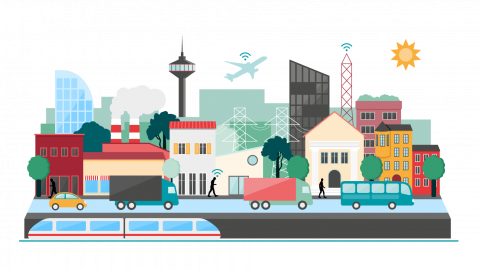
Innovation and customer value
Examine which parts of your product or system require innovation and new development to meet future needs and customer demands. Simultaneously, recognize the importance of maintaining and sustaining existing functionalities and solutions critical for providing value and a stable user experience to customers.
For instance, if you work for a software company, investing in innovation and new features to meet changing market needs is crucial. However, you must also manage and address critical bugs in the existing code to ensure current customers have a positive experience and maintain their trust in the product. This approach helps you avoid accumulating excessive technical debt that will eventually need to be addressed.
At first glance, SAFe may appear heavily focused on innovation and new development, leading you to believe it may not suit a more traditional maintenance-oriented organization. However, that's not entirely true. Even in a traditional maintenance-focused organization with minimal new development, SAFe's roles and ceremonies can still be highly beneficial. In a maintenance organization, similar questions arise as in a development team.
However, development teams may focus more on creating different features and products, while a maintenance organization concentrates on developing the technology stack and offering cost-effective, easily manageable, and secure solutions.
Technical debt and maintenance
Technical debt can arise when rapid innovation and neglect of existing code lead to quality and performance issues. Recognize the need to manage technical debt by balancing time and resources between new development and maintaining existing systems and applications.
For example, if you work on developing web applications, the temptation to continuously add new features without addressing performance issues in the existing code might arise. By balancing new development with technical debt management, you ensure that the application remains fast and efficient even as it grows.
You can read more about this in our blog series on managing technical debt, which you can find on the same website as this series.
User feedback and innovation
User feedback is invaluable for understanding what works well and what can be improved. Cultivate a culture where user feedback is prioritized and serves as the basis for both innovation and maintenance.
For instance, if you work on a mobile app, use user feedback to identify the most requested features and the bugs that most affect the user experience. By using feedback to prioritize development efforts, you ensure that innovation is focused on what truly adds value for users. We also discuss this in our series on managing technical debt.
We recommend taking a look at that article if you haven't already, as it further develops the discussion on balancing user experience and innovation.
Prioritization
Work with business owners and stakeholders to determine priorities between innovation and maintenance. Clearly communicate which initiatives are more geared towards meeting new requirements and which are focused on maintaining existing quality and operational stability.
Explain in a clear and understandable manner how different development efforts can impact the product's stability, and introduce the concept of technical debt to foster stakeholders' understanding of why it is essential to manage and plan for it. Even if innovation efforts may suffer slightly, it's crucial for stakeholders to grasp that technical debt and system maintenance must also be addressed.
By having a clear roadmap and prioritization plan, you can avoid getting stuck solely in new development or solely in maintenance. Balanced priorities provide a broad perspective and ensure both innovation and maintenance are handled responsibly. In the roadmap, you can include both innovation-related and more maintenance-oriented activities.
This way, these activities can be prioritized together, and it becomes clear to everyone involved in what order things should be done.
By exploring and communicating the importance of finding the right balance between innovation and maintenance, you can create a healthy work environment where both future needs and existing customers' expectations are met efficiently and strategically. In the next article, we will discuss how to avoid getting caught in the 'analysis loop.'



